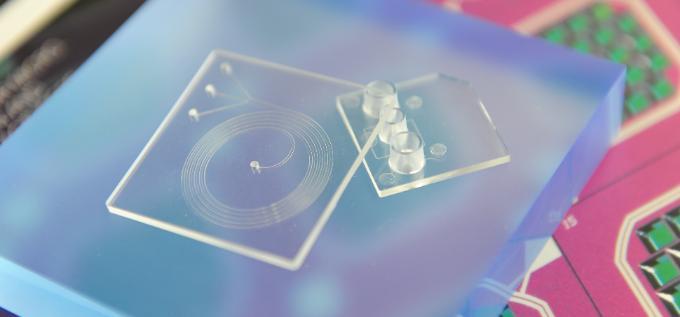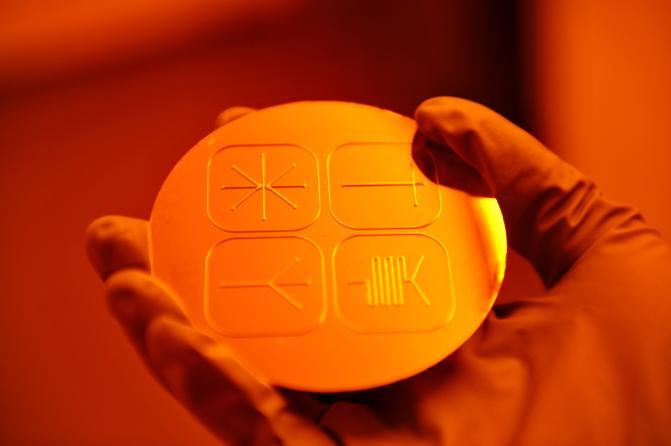Summary
Point-of-care diagnostic devices give rapid and accurate test results, meaning clinicians can deliver faster diagnoses, improving patient outcomes and saving lives. “Microfluidic chips” are a critical component of these devices. They are also used for PCR tests and developing vaccines, as well as making drugs for treating genetic diseases.
But getting these chips from R&D to the market is challenging. Dr Zhang and his team’s research focuses on accelerating that transition. They have developed processes to help diagnostic companies and laboratories bring their diagnostic tests to clinical trials, and eventually to full-scale production. This not only benefits Ireland’s diagnostics and biopharma industry, which profits from faster technological advances, but most importantly it benefits patients through quicker access to improved tools for detecting and treating disease.
Research description
Point-of-care diagnostic devices improve patient’s lives. They are easy to use, and give rapid and accurate test results without requiring a certified laboratory, enabling healthcare professionals to deliver quicker diagnoses and make faster clinical decisions, which is crucial for saving lives.
 So-called “microfluidic chips” are one of the main building blocks of these point-of-care devices. Composed of many tiny channels similar to human blood vessels (around 10 to 100 times smaller than a millimetre in diameter), they can process tiny quantities of fluids, and are widely used in point-of-care clinical and veterinary diagnostics (such as for Covid-19), as well as in drug development, environmental monitoring, and analytical tools.
So-called “microfluidic chips” are one of the main building blocks of these point-of-care devices. Composed of many tiny channels similar to human blood vessels (around 10 to 100 times smaller than a millimetre in diameter), they can process tiny quantities of fluids, and are widely used in point-of-care clinical and veterinary diagnostics (such as for Covid-19), as well as in drug development, environmental monitoring, and analytical tools.
However, 99% of microfluidic chips developed in research labs fail to reach the marketplace: there are a range of technical and commercial challenges involved in scaling-up manufacturing. Ten years of research in this area (following a PhD and employment in the microfluidic diagnostics industry) have allowed Dr Nan Zhang to resolve these challenges.
His research focusses on accelerating the translation of microfluidic devices from the laboratory to commercial production, by developing ways for companies to fabricate these complex devices without defects, and with low-cost, in a commercial environment. Through this research, Dr Zhang’s team has established technologies and processes for the design, optimisation and prototyping of plastic microfluidic chips, followed by manufacturing at a larger scale and creating close-to-market products.
Dr Zhang and his team have developed one patent (which is being exploited by a NovaUCD start-up focused on designing and prototyping microfluidic devices) and developed a toolkit to scale-up the manufacturing of microfluidic chips. They collaborate with international and Irish diagnostic companies, including Poseida, FPC-DCU, Novus Diagnostics, Cellix and Sintef.
 Diagnostic devices that reply on microfluidic chips improve patient outcomes and save lives. Dr Zhang’s team are helping bring these devices to the market, and hence to patients, much faster than would otherwise be the case, therefore contributing to public health.
Diagnostic devices that reply on microfluidic chips improve patient outcomes and save lives. Dr Zhang’s team are helping bring these devices to the market, and hence to patients, much faster than would otherwise be the case, therefore contributing to public health.